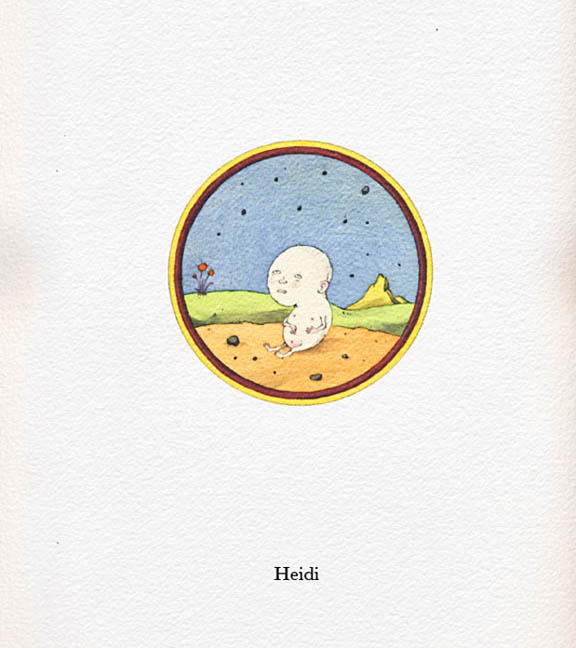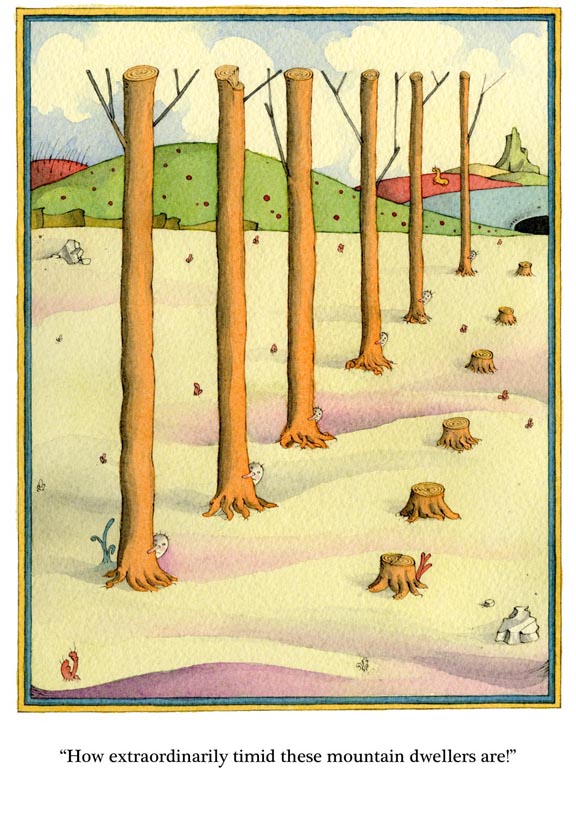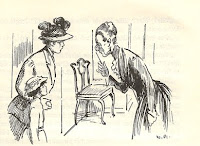I’ve just read ‘Heidi’ in German for the first time ever, which is odd, considering my bilingual state! As a child, I had a delightfully-illustrated English translation, long gone, alas, how I’d like to see some of those pictures again.<?xml:namespace prefix = o ns = "urn:schemas-microsoft-com:office:office" />
However, this blog is not about the pleasures of reading it in the original – I’d been hoping for Swiss dialect, and was disappointed. It did engage me, though. I loved, once again, the description of the child’s arrival at the Alm, of the grandfather’s care for her, of the high mountain pastures and the goats – all described so vividly, I could feel the wind, smell the flowers, see the blue sky. The goats were engaging, too, especially since I’ve been accompanying my small grandson to various city farms, where I’ve seen how nice they can be with children.
Then I got to the bit where aunt Dete comes back and takes her niece, willy-nilly, off to <?xml:namespace prefix = st1 ns = "urn:schemas-microsoft-com:office:smarttags" />Frankfurt, where she is to be a companion to little disabled Klara. It was at that point that the adult in me woke up and raged. Heidi is acquired by the Sesemanns as a cat or a dog might be, and when she proves not to be the docile animal the housekeeper had expected, she’s bullied and abused by this female, accused of ingratitude when she feels homesick, forced to repress all her grief. The picture of her, sitting in her room all by herself, desperately trying not to cry for fear someone might hear her, is utterly heart-rending. And her ‘pranks’ – such as trying to find a tower she can see the countryside from, or bringing home kittens – are distorted into proof of insanity or an evil nature by the housekeeper. She has friends in the house, the butler Sebastian, Klara herself, but they can't really help Heidi because what she needs most of all is not to be in Frankfurt. Of course then the good grandmother comes and tells her to confide all her unspoken troubles to God, and when God doesn’t give her what she wants, tells her she must go on praying because God will give her what she asks for only if it’s good for her. Meanwhile the child stops eating and wastes away almost unnoticed, and if she hadn’t started sleepwalking, would presumably have died before it occurred to Fräulein Rottenmeier to concern herself about her well-being.
Leaving aside the rest of the story, and the rather gruesome abject piety, what struck me most was this narrative about poverty, and the way the poor are exploited by the wealthy. It made me think of the unfortunate ‘Swabian children’, the children of desperately needy peasants in the high Alps, both Swiss and Tyrolean, who were taken in droves to southern Germany and offered to farmers at so called ‘child markets’. This was the time when mountain people often lived on nothing but polenta, when a piece of bread was absolute luxury to the children. Concerned contemporary commentators described the 'child markets' as slave markets, and the children were worked like slaves, paid virtually nothing, and frequently abused- but their parents were spared the expense of feeding them. Like Heidi, they must have to repress their desperate homesickness. Nobody cared, anyway, they were another kind of domestic animal, probably worse fed than the oxen and the pigs. I do wonder whether Spyri had their plight in mind – though her own story of depression, an abusive husband, and docile acceptance of her lot, seeking help only from God, has clearly also fed into these parts of the novel.
Heidi is of course luckier than the 'Swabian children' – she gets back home, her rich pet-owners turn into rich patrons and assure her grandfather that they will always look after her, so she will never have to go out and earn her bread among strangers. The other family on the mountainside, goat-herd Peter, his mother and grandmother, also get some trickle-down effect from her good fortune, a bed and warm clothes for the grandmother, and a lifetime’s pocket-money for Peter. Luckier, too, than her creator, who only had a few years to enjoy independence and the friendship of other writers after her husband died. Her son predeceased her, too.










 You have already overcome all of these hurdles and remained focused. You are fortunate to begin your medical education at a time when you can shape the future of the profession. Medical education is becoming more innovative,
You have already overcome all of these hurdles and remained focused. You are fortunate to begin your medical education at a time when you can shape the future of the profession. Medical education is becoming more innovative, 


That was fascinating, Leslie. I had never come across these Swabian children before, but I will go and do some research (just as soon as I've finished this book about bullying - how appropriate!) And thank you for reminding me of Heidi which I haven't read in 40 years. I assumed it was one of those that shouldn't be revisited, but perhaps it will have stood the test of time after all.
Had no idea of this background. Does give a completely different tone to the book. May go back and read it again.Thanks.
Fascinating Leslie. I'd forgotten all those Heidi details and never knew of the Swabian children. There was a similar situation with the children of the San (bushmen)in Southern Africa. Parents and children were 'tied'to cetain farms and if the parents left they had to leave their children behind. They became apprenticed as 'orphans' but were in fact slaves... though this was denied by the farmers as Britain had already abolished the slave trade in the colonies in 1833.
Interesting, Dianne, about those African kids. I guess another parallel would be the orphan kids who were shipped out to Canada, etc, was it in the '50s? I have only the vaguest idea. But know it was really tough for them.
I'd no idea either about the Swabian children or about Johanna Spyri's sad life.
I used to love the book and still have it. There were very poor 'sequels' done by some man or other, weren't there? Charles somebody.
Charles Tritten, he was her American translator, yes, I have them for interest's sake, enjoyed them when I was a kid, but am deeply irritated by them now, Heidi is portrayed with blond hair for a start! And they're leaden by comparison with the wonderful descriptions of the high Alm in Spyri's book.